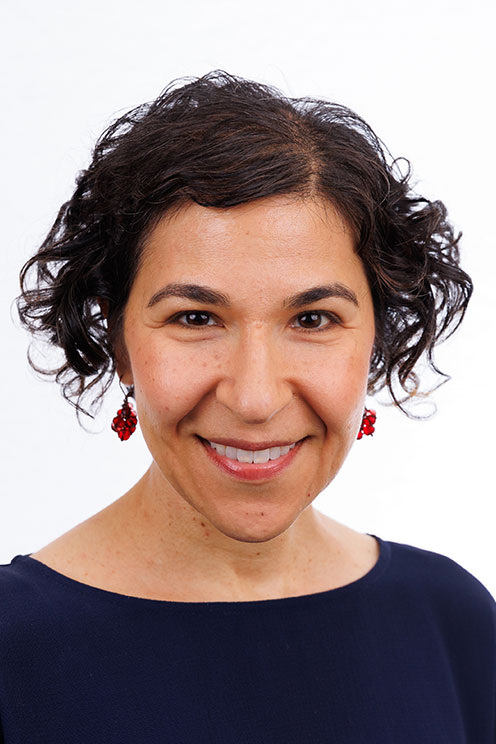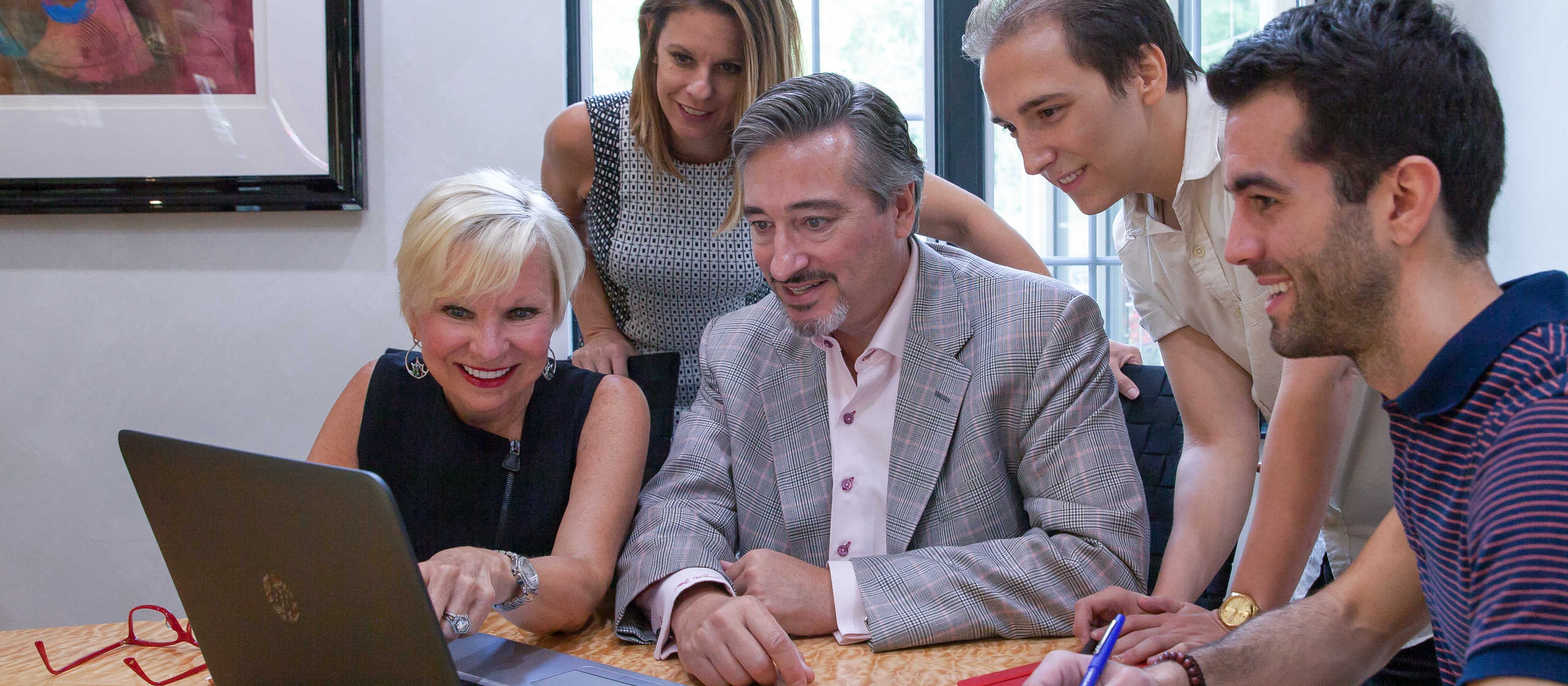Employee Experience, Employee Surveys, Remote & Hybrid Culture
Owner Lauren Dixon shares lessons learned around returning to the office—and how checking in with employees year-round to ask “How are you? What do you need?” creates a culture of trust.
Lauren Dixon isn’t a leader who’s afraid of admitting when she is wrong.
“I was never a big advocate of working from home,” says Dixon, owner and board chair of Rochester, New York-based marketing agency Dixon Schwabl + Company. “In fact, just the opposite. I was convinced as the CEO that our end product and our culture would suffer greatly. I’ll be the first to raise my hand and say I was dead wrong.”
Dixon quickly learned that work could be done – and done well – outside the office, which, in this case is a 30,000-square-foot building complete with a koi pond and deemed a Rochester “cool space.”
The office was built by the company and is home to a 115-member workforce that includes remote employees from across the country – something that wouldn’t have been on the table two years ago. “Never ever in a million years, ever,” Dixon admits.
But as we all know, the post-pandemic workplace has new expectations and demands from employees. Many organizations like Dixon Schwabl, a Great Place To Work-Certified™ company and one of the Fortune Best Workplaces in New York™, have learned to adapt and adjust to the desire for more workplace flexibility.
As states roll back mask mandates and hopes are high that the pandemic is shifting to an endemic, there’s no going back to how we used to work. Dixon stresses the importance of checking in and responding to rapidly shifting employee needs.
“You can’t do enough pulse surveys, because what your employees are thinking today can be very, very different next week,” she says.
The days of prolonged meetings around organizational decisions? Over.
“You’ve got to be in a position to react immediately. We can no longer wait,” she says. “If we find out something today, we can’t wait two weeks to implement something. We’ve got to implement it tomorrow at 8 a.m. because that’s what your people expect. Everything is so fast and if you wait, all the trust that you’ve built up with them will go out the window.”
Dixon was faced with the need to react quickly in September 2020, a time when many were hopeful the pandemic was under control and before the Delta variant hit. Employees were asked to return to the office and work three days a week of their choosing.
“Naively, we thought that would be okay,” she says. “It was not okay. There was a lot of angst around it. A lot of angst.”
“You can’t do enough pulse surveys, because what your employees are thinking today can be very, very different next week.”
The management team immediately launched a pulse survey and were surprised by the results.
“It was shocking to us that only 13% of our team members wanted to come back full time,” she says. Sixty-eight percent didn't want to come back at all, at least not at that time. And just 19% wanted to come back between one to four days a week.
Dixon, who served as CEO for 34 years before transitioning to board chair in 2020, said CEO Kim Allen addressed employees and admitted the company made a misstep. “We said, ‘We heard you, we’re going to react to what it is that you need and want. And this is what it is.’”
They cancelled the mandate and employees could decide when, or if, they wanted to work from the office – and how often.
“It’s all about choice,” she says. “And it’s still all about choice.”
Tailor needs to your workforce
The majority of the firm’s workforce, about 60%, are in the 20- to 40-year-old range. A recent pulse survey revealed an increased desire for hybrid work compared with 2020. Currently, among those within driving distance of the office, 6% work from the office full-time, 58% are hybrid and 36% are fully virtual. The majority of employees said they prefer to work about 1.5 days in the office and the rest virtually each week.
But the toll working from home can take, particularly among young workers who live by themselves, worries Dixon. She’s personally known more people who have died by suicide in the last two years than in the previous 20 combined.
“That is the thing that keeps me up at night,” she says. “And it’s never, in my case anyway, the people who mope around and are depressed. They’re people who are gregarious and fun loving, and the life of the party who you'd never guess are struggling. What’s different for them? They have no interaction. They’re holed up in their home. That’s the thing that worries me.”
“It’s all about choice. And it’s still all about choice.”
The company held plenty of in-office activities pre-pandemic – Hawaiian hula dancers, magicians, ice cream night, hip-hop violinists – and has made a concerted effort to resume those activities to provide remote workers with social interaction. It recently held a chili cook-off and is planning an outdoor cigar and scotch night as the weather warms in April.
All events are voluntary.
“We want them to want to come,” Dixon says. “Instead of us saying, you have to come. That’s the difference.”
The management team is also deciding how to use the building’s extra space to benefit younger employees.
“What are the things that they need and want that we can take worry, stress or time away from them to make it a better, more satisfying work experience?” she says.
That might mean renting out space to a yoga teacher, massage therapist, or daycare.
Employees are also encouraged to use the office to host a board meeting or activity for a committee or group they’re involved with.
Dixon Schwabl’s highest scores in employee surveys powered by Great Place To Work are how proud team members are of the organization’s community involvement. Nearly every employee serves on a committee, Dixon says.
“They could host a board meeting and we would provide breakfast or lunch at our expense for these younger people to do another give-back to their favorite charity of choice,” she says. “There’s all sorts of things that we’re trying to do for this population.”
Survey often—and keep it short
You can’t respond to employee needs if you don’t know what they are. A powerful way to elicit feedback is a pulse survey. Use them often, but keep it short, Dixon advises.
1. Keep the number of questions short
“You can’t ask 20 questions every other week,” she says. “If you want to get good solid information, have fewer questions.”
She recommends asking three to four questions “so that people know every time they get a pulse survey, that they can spend a minute with it, as opposed to 15 minutes – they’re just not going to do it.”
2. Act on the results
Don’t conduct a survey if you don’t plan to do anything with the results. It’s better to ask for forgiveness over a wrong decision than make no decision.
“If you sense something is changing within your population and you survey them and you sit on the results and call your management team and ask, ‘Should we do this or should we not do this?’ No, you fly by the seat of your pants and make a decision. You’re going to make some wrong choices but make a decision. Get it out there because that’s what your team members expect.”
They also expect change. It has become the norm.
“They give you forgiveness if you have to pivot and change,” she says. “There was a time when they used to not do that, but they do that now. They’re way more forgiving because of what's been happening.”
Host 15-minute Zoom check-ins
Listening to employees is a priority for Dixon Schwabl, something that best workplaces are focused on in 2022.
The CEO and president hold a joint 15-minute Zoom call with every employee four times a year to check in and say, “Tell me what's going on. What can I do?”
Talking with all 115 employees takes about two-and-a-half months. Then they start all over again.
Those simple, quick check-ins with employees – asking how they are and what they need – go a long way to build trust and deepen relationships. Our non-work life, which often got left at the office door pre-pandemic, is ever-present in today’s workplace.
“Who would've known that I would've seen anyone in yoga pants or have their cats race across their keyboard,” Dixon says. “There were so many funny, real, touching moments. I don't know that I would've ever had the opportunity to explore that part of my team member’s relationship. It’s brought us closer and tighter. In that respect, it’s been a good thing.”
What defines your company culture?
Great companies care for their people as humans first, and employees second.
The best way to find out what makes your employees feel cared for is to ask them. With an employee survey you can gain insight into what your employees see as the key areas necessary to build the foundation of care and support that we see in all great company cultures. Ask us about how we can help you build a great company culture today.














